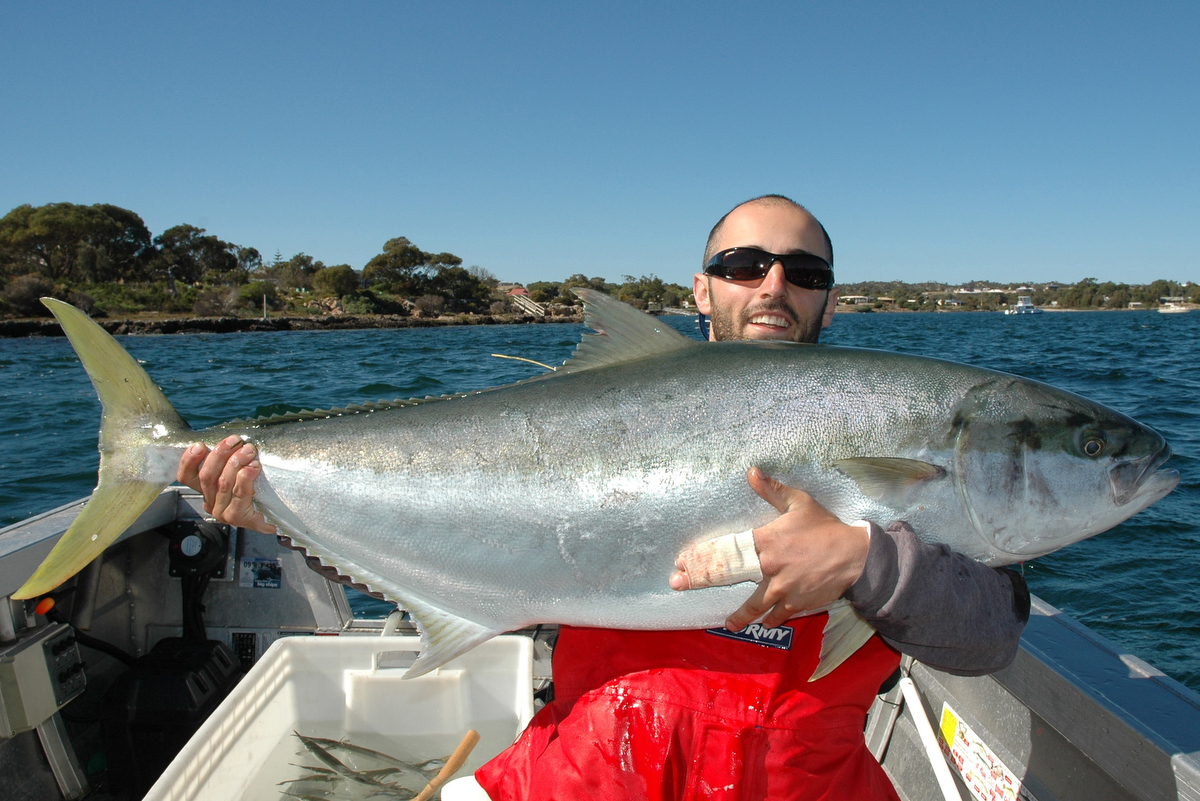YELLOWTAIL kingfish are fast, fighting foes. You need to be on the ball to land one, writes STEVE COOPER:
WHEN IT comes to big bruisers, yellowtail kingfish are up near the top of the list. A hook-up with a big kingfish is a cosmic experience.
Fishing with live bait set under a balloon, you watch as the balloon starts to move across the surface of the water, a sign of the nervous baitfish below trying to escape the jaws of a predator. Suddenly the bait is inhaled and the balloon breaks free of the line to drift away. Meanwhile, the ratchet on your reel signifies the fish is running away with the bait so you push the lever drag setting up and set the hook, and then hang on as 20kg or so of yellowtail kingfish steams off.
The experience is awesome. Your adrenalin rushes so fast, your arms shake and you wonder whether you have the stamina to outlast the kingfish.

As a metre or so of kingfish nears the surface you spy the yellow, crescent shaped tail and marvel at the band that appears mask-like across its eyes. Mexicans (as Victorian anglers are called) beware: Zorro is mean and tough and he don’t take prisoners when it comes to el cheapo tackle and novice anglers.
Yellowtail kingfish are a serious opponent. In deep water, they will run straight down and drag your line through reef. Hook a big one on a pier and you can count on it running straight through the pilings below.
South Australia boasts the biggest kingfish in the country with anglers catching them up to 48kg, 8kg less than the unofficial biggest commercially-netted fish.

One of the few areas where big yellowtail kingfish are in good numbers, and the terrain favours the angler, is Coffin Bay in South Australia. Situated on the west side of the Eyre Peninsula, about 45 km from Port Lincoln, the township is a favourite destination among anglers in the know, with the know-how to catch kingfish, and a few other species including squid, garfish, silver trevally, snook and big snapper and kidney-thumping King George whiting.
Coffin Bay is nestled on a sheltered coastal lagoon complex near Port Lincoln consisting of Port Douglas, Mount Dutton Ba and Kellidie Bay. It is a beautiful, idyllic destination surrounded by National and Conservation Parks with an abundance of wildlife, birdlife and magnificent wildflowers. The exposed jagged cliffs, sand dunes, long white beaches and wild seas of the Coffin Bay Peninsula contrast starkly with the sheltered, tranquil waters of the bays.
There are several hot spots for the kings, but it depends on weather as to where you can fish. The entrance to Kellidie Bay, about 2km from the Coffin Bay boat ramp, is popular. The water depth is 3-5m, and it is a sandy channel that connects the two bays. Sand bars surround the stretch so you won’t be reefed as easily as happens in other areas, and it is sheltered when the wind is blowing from the west. Other hot spots are Crinalin Point, at the northwest extremity of the township, and the rock ledge, most popular when a northerly is blowing, that divides Kellidie Bay from Coffin Bay.

There is a wharf that is popular and this produces most species. However, hooking and landing are two entirely different processes. Big kingfish are rarely landed from this pier due to the proximity of boat moorings, but you will catch snapper, Tommy rough and silver trevally.
TACKLE
Minimum tackle requirements are a 15kg game fishing outfit. Full roller guides are not necessary, but the reel should be a quality lever drag such as the Penn International or Shimano Tiagra. Spool your reel with 24kg braid and use a 50kg wind on leader.
METHODS
Live baitfish such as salmon are bridle rigged using an 8/0 to 10/0 Circle hook. Popular live baits for kings include squid, salmon, garfish, slimy mackerel, yellowtail scad and pike.
Live squid are best rigged on a twin ‘J’ hook rig, snelled far enough apart so that bottom hook is pinned through the collar of the squid body, and the top hook is hooked lightly in the apex.
At Coffin Bay, when live baiting, it is necessary to suspend the bait a couple of metres or so under a small balloon. This keeps the bait in the strike zone at all times, particularly at tide changes when these fish hunt at their peak.

Kingfish have been caught at various times. The Spring tides that occur over the new and full moon periods are more productive.
STEVE COOPER won two Walkley Awards for investigative journalism but his great love is fishing and he is renowned as one of Australia’s foremost writers and broadcasters on the subject.



Discussion about this post